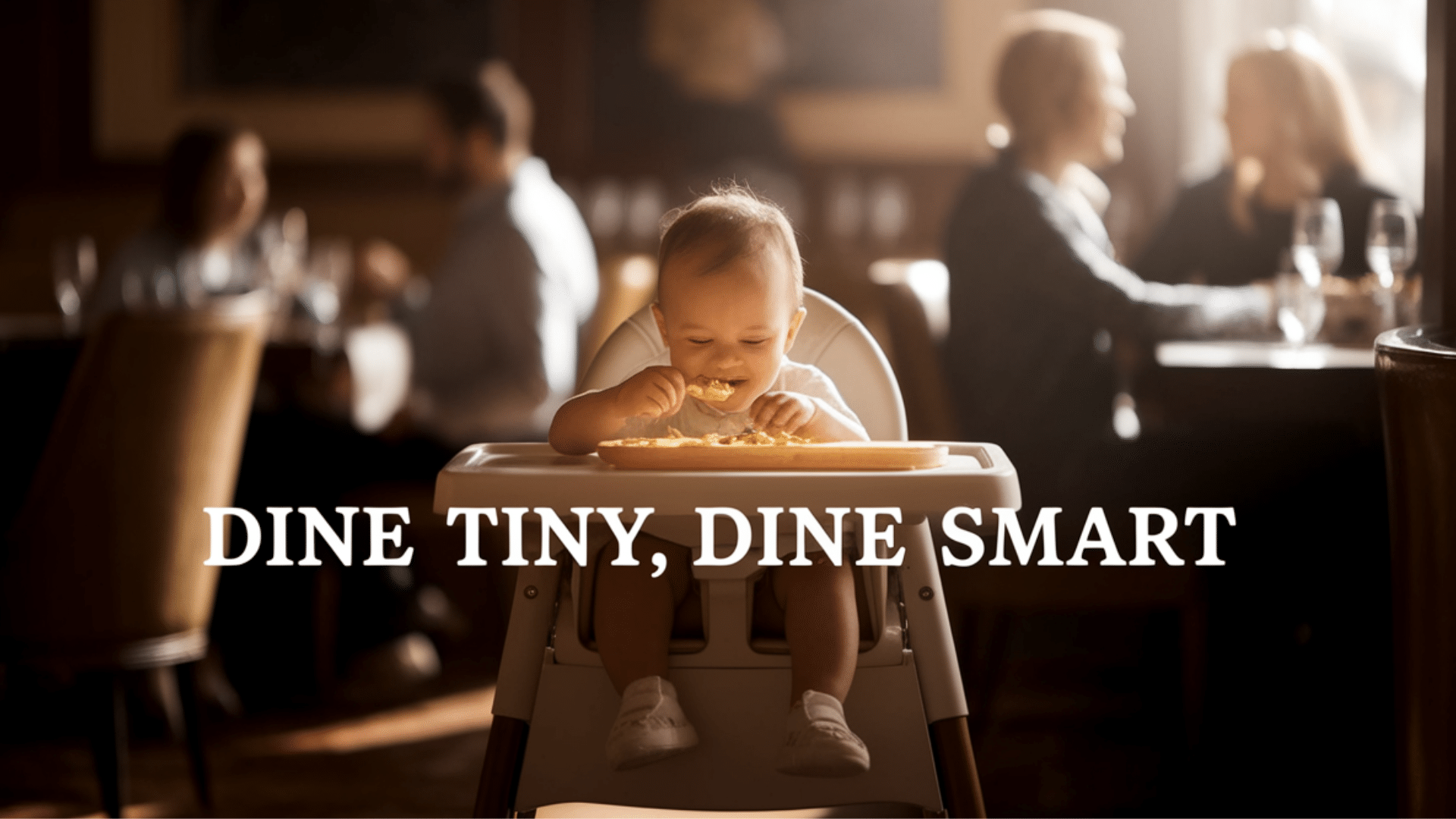
When can babies sit in high chairs at restaurants? Most infants are ready for this exciting milestone between 4 and 6 months of age, coinciding with their introduction to solid foods.
Before dining out, ensure your child has developed strong head and neck control—essential for safely using restaurant high chairs.
Your baby should maintain an upright position with minimal support for several minutes without excessive slouching.
Interestingly, studies show that early positive dining experiences help develop healthier eating habits in childhood!
Watch for readiness signs: your baby intently observing your meals indicates their growing curiosity about food and family mealtime rituals.
While each child develops uniquely, these key indicators help determine when your baby can comfortably join the restaurant experience.
What developmental signs have you noticed in your little one?
Signs Your Baby Is Ready for a High Chair
Signs that your baby is ready for a high chair typically appear between 4 and 6 months, coinciding with their introduction to solid foods.
Before using restaurant high chairs, ensure your baby has developed strong head and neck control. These muscles help them stay safely upright during meals. If their head still wobbles frequently, it’s best to wait longer.
While perfect sitting posture isn’t required, your baby should be able to maintain an upright position with minimal support for several minutes without significant slouching.
Their back should remain relatively straight, demonstrating developing core strength. Another key indicator is their growing interest in your meals.
When they watch you eating with fascination, it signals that they’re ready to join the family dining experience in their high chair.
Restaurant High Chair Safety Essentials
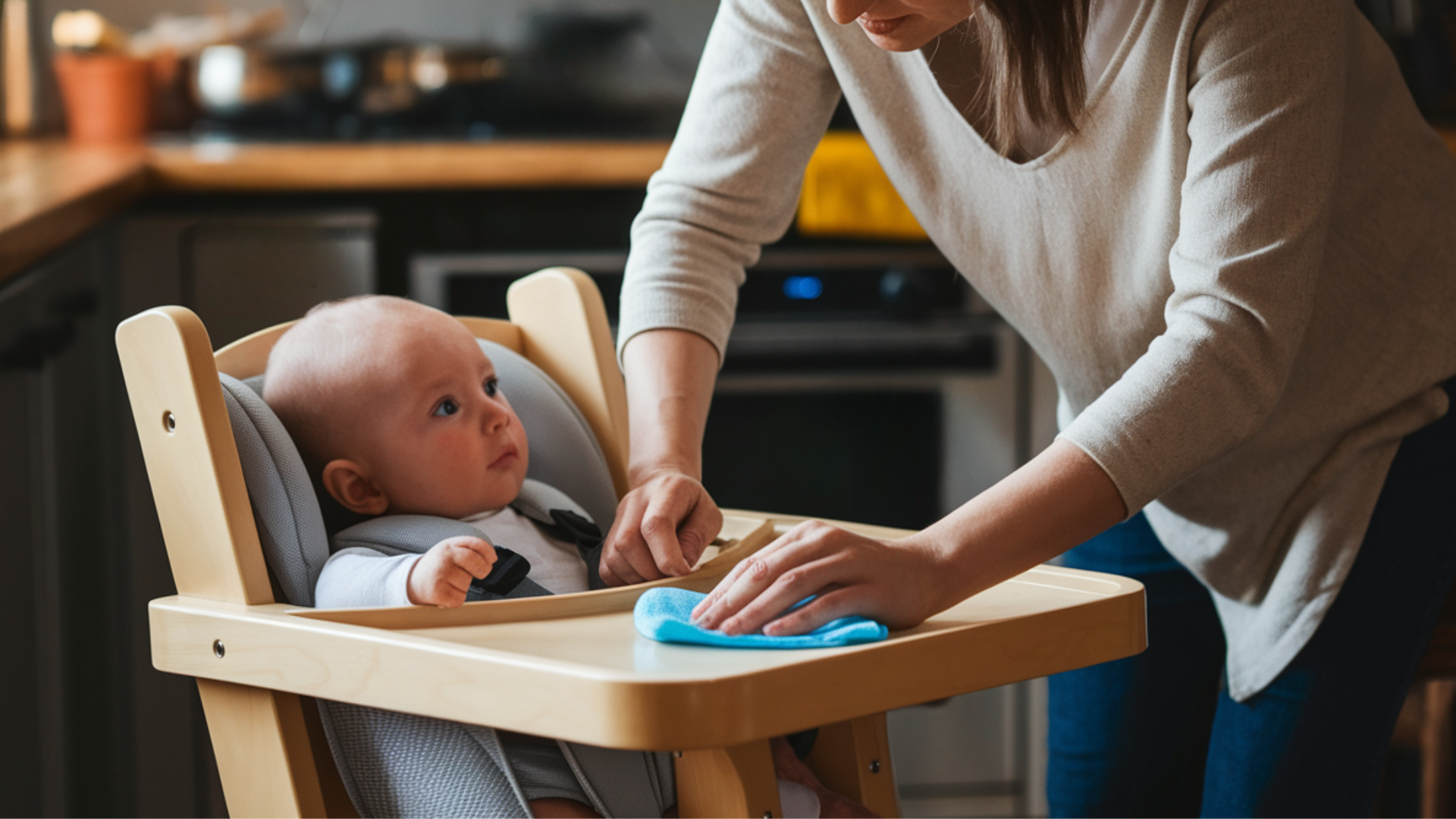
Restaurant high chairs should be inspected for stability, cleanliness, and working safety straps before you seat your baby.
Always stay within arm’s reach during the meal to prevent tipping or falls, even when using the provided restraint system.
What to Check Before Placing Your Baby in a Restaurant High Chair?
Before seating your baby, inspect the high chair for stability, damage, and cleanliness. Look for wobbly legs, missing screws, or broken parts that could create hazards. Bring sanitizing wipes to clean surfaces your little one might touch.
Proper Harness and Restraint Usage
Always use safety straps, ensuring they fit snugly without being too tight. The crotch strap is crucial for preventing your baby from sliding underneath the tray. If the restaurant’s straps are damaged, consider bringing a portable harness.
Positioning Your Baby Correctly
Position your baby with its back against the chair’s backrest and feet resting on any footrest provided. Keep the tray at a comfortable distance and always stay within arm’s reach, even when it’s properly secured.
Types of Restaurant Seating Options for Babies
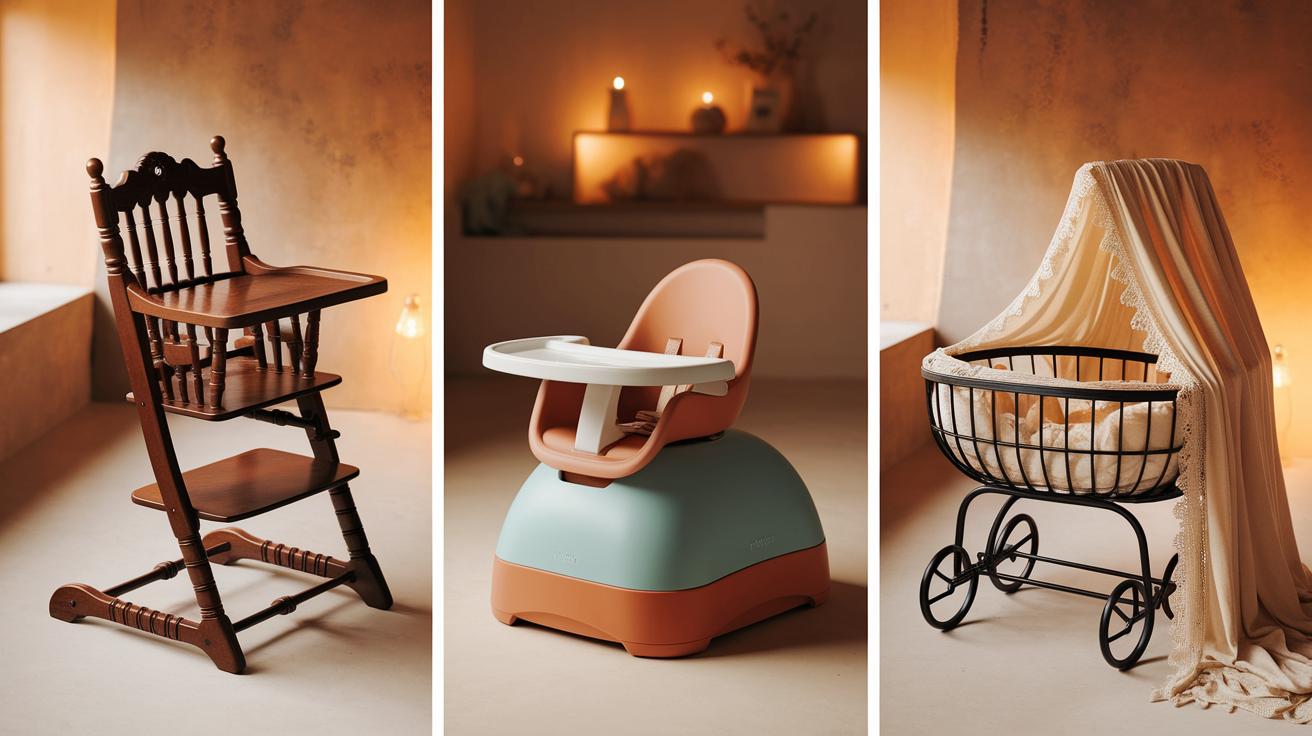
Most restaurants offer wooden high chairs with safety straps, while some family-friendly establishments provide space-saving hook-on seats or portable fabric harnesses.
Many modern venues also feature convertible boosters that adjust as your child grows from infant to toddler.
| SEATING OPTION | AGE RANGE | FEATURES | PROS | CONS |
|---|---|---|---|---|
| Traditional High Chair | 6–36 months | Built-in tray, harness, elevated to table height | Good containment, ideal for younger babies | Bulky, not always clean |
| Booster Seat | 18+ months | Attaches to regular chair, no tray, uses table surface | Portable, versatile, space-saving | May lack restraints, less stable for younger toddlers |
| Infant Seat Cradle | Under 6 months | Reclined support, full head and neck protection | Excellent support for young infants | Less interactive, rare in restaurants |
How Long Do Babies Use High Chairs in Restaurants?
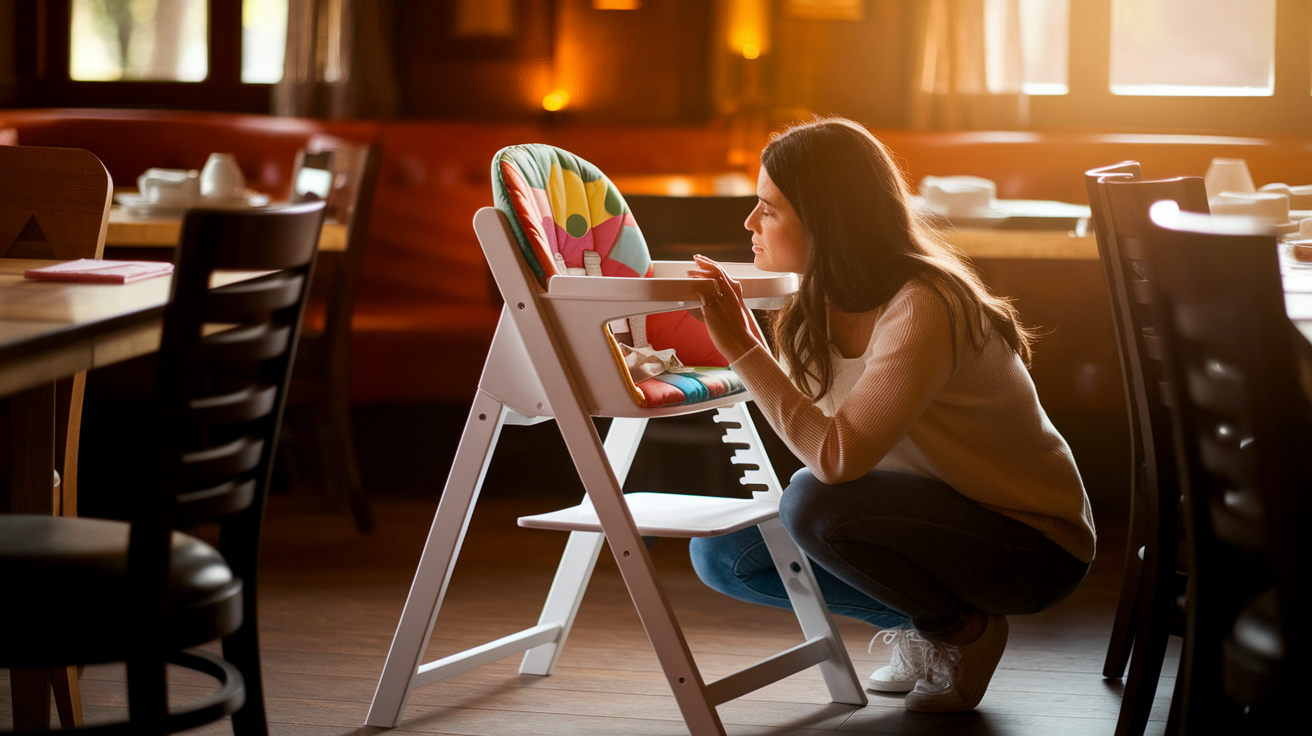
Most babies use restaurant high chairs from around 6 months until approximately 2-3 years of age, depending on their size and ability to sit safely at a regular table.
The transition typically occurs when they can sit comfortably in a booster seat or regular chair while maintaining proper posture during meals.
Age and Weight Limitations
Most restaurant high chairs accommodate babies from 6 months to 3 years. Depending on the chair design, weight limitations typically range from 30 to 50 pounds. Always check the chair’s stability as your child grows heavier to ensure continued safety during restaurant visits.
Signs Your Child is Outgrowing the High Chair
Watch for your toddler attempting to climb out, feeling cramped, or showing frustration with the restraints. If their legs are uncomfortably bent or they can wiggle free from the harness, it’s time to consider alternatives for restaurant dining.
Transitioning to Booster Seats
Around 18-24 months, many children begin transitioning to booster seats. Start with boosters that have safety straps and backs for support. This milestone coincides with improved sitting skills and a desire for independence at the table.
Alternatives to Restaurant High Chairs
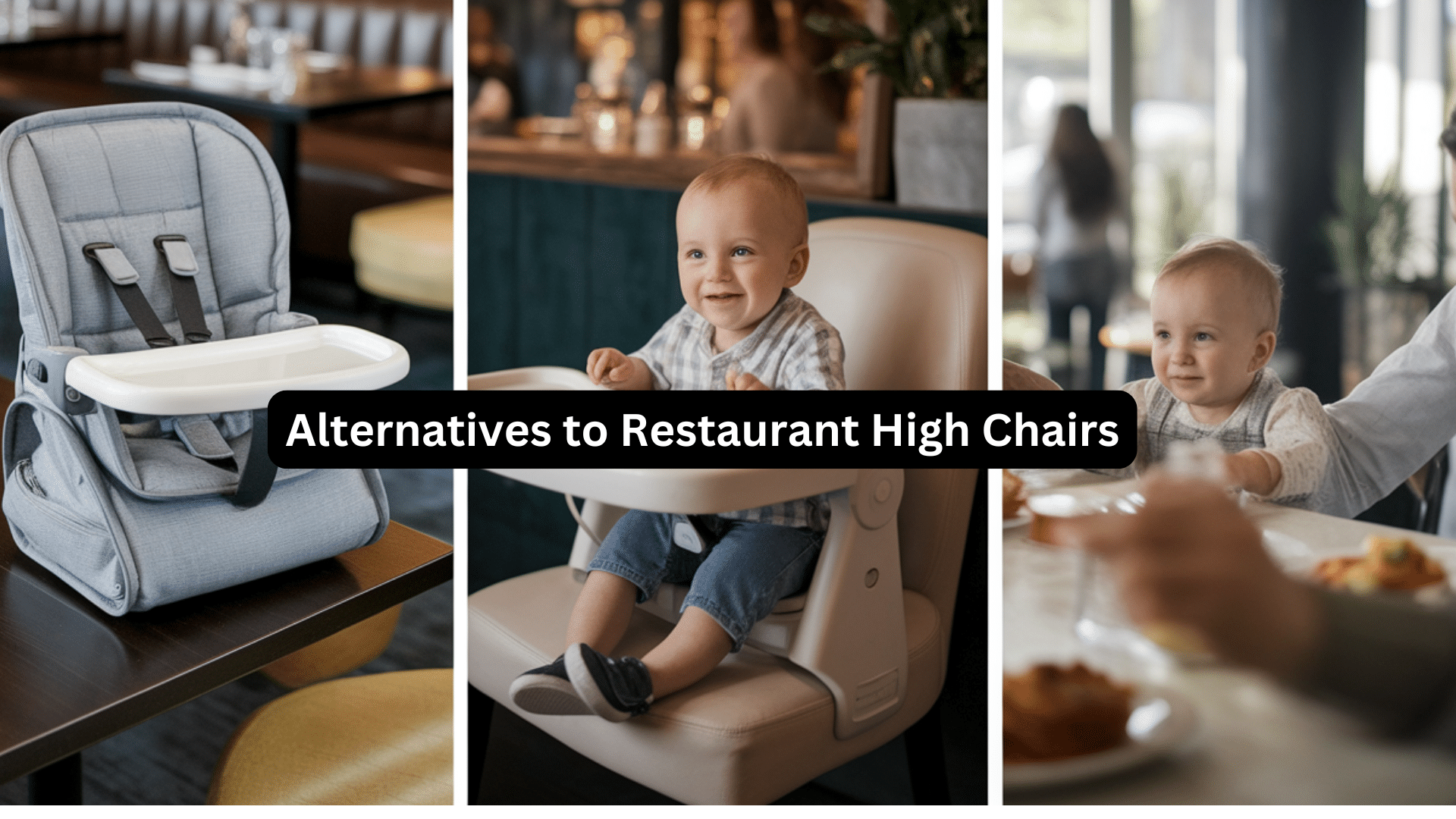
Restaurant high chairs may not always be available, clean, or suited to your baby’s comfort level, making alternatives worth considering.
Alternate options give you control over cleanliness and safety while accommodating restaurants with limited seating options or allowing dining at establishments that don’t typically cater to families with infants.
Portable High Chairs and Boosters
Bring-your-own portable high chairs and boosters offer reliable, clean seating for restaurant dining. Fabric options fold compactly into diaper bags, while sturdier travel seats provide familiar comfort for babies who dislike restaurant chairs.
Many portable options include 5-point harnesses for maximum security.
Clip-On Table Chairs
Clip-on chairs attach directly to table edges, saving space and keeping babies at adult height. These compact alternatives work best for babies 6-37 months who have excellent sitting skills.
Always check weight limits and table compatibility before attaching to restaurant tables.
Materials and Hygiene Considerations
Always prioritize cleanliness when using restaurant high chairs to protect your baby from germs and ensure a pleasant dining experience. The materials of high chairs present different cleaning challenges and comfort considerations.
Key points to remember:
- Wipe down all surfaces with antibacterial wipes before use, especially the tray, seat, and straps
- Pack a washable fabric cover or disposable liner in your diaper bag
- Wooden high chairs have more crevices where crumbs collect
- Plastic chairs are easier to clean but may harbor invisible bacteria
- Check metal components for sharp edges or rust
- Consider bringing a silicone placemat that suctions to trays for a clean eating surface
Common High Chair Safety Concerns
• Always ensure restaurant high chairs are stable on level ground with wide bases to prevent tipping, especially when active babies shift their weight.
• Never leave your baby unattended in a high chair, even when properly strapped in, as accidents can happen quickly in restaurant environments.
• Check for potential entrapment hazards, such as gaps between the tray and seat, and make sure the space is snug against your baby’s tummy.
• Inspect that all parts are properly assembled before use, as missing components can create dangerous openings for small limbs.
• Clear the high chair area of choking hazards, such as sugar packets, straws, toothpicks, and hard candies that might be within your baby’s reach.
• Position the high chair away from decorative table items like candles and flower arrangements that curious babies might grab during mealtime.
Wrapping It Up
Deciding when your baby can sit in high chairs at restaurants depends on their developmental readiness, which is typically between 4 and 6 months.
Before your restaurant experiences, ensure your little one demonstrates strong head control, can sit with minimal support, and shows interest in your meals.
Remember that each baby develops at their own pace—some may be ready earlier, while others might need more time.
Creating positive dining experiences early helps establish healthy eating habits and wonderful family memories.
Always prioritize safety by checking that restaurant high chairs have functional straps and clean surfaces before seating your baby.
Ready to introduce your little foodie to the world of dining out? Start with shorter, less busy restaurant visits, and watch their culinary curiosity bloom with each new experience!
Share your first restaurant experience with us in the comments and create memories.
If you’re interested in more informational content on mothers and babies, feel free to click here and explore other blogs that you might enjoy!
